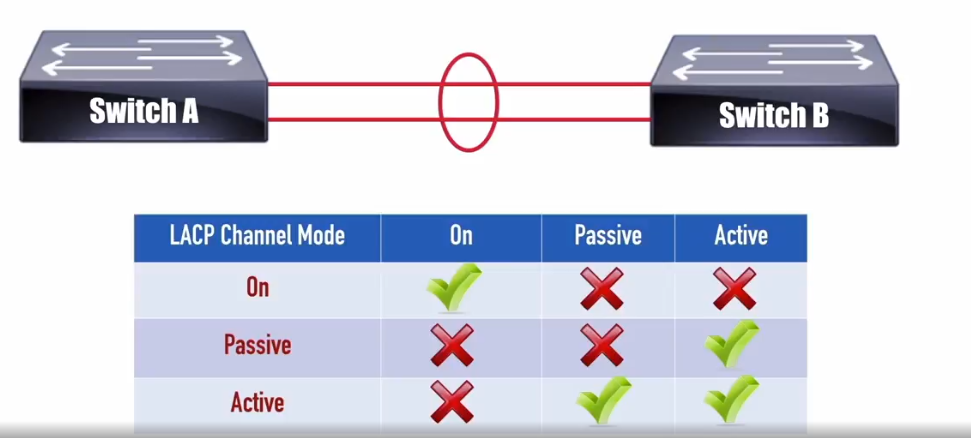Chapter 6 dives into VLAN Trunking Protocol (VTP), Dynamic Trunking Protocol (DTP), and EtherChannel, three essential technologies for managing VLANs and increasing network bandwidth. We’ll explore configuration details, port modes, and troubleshooting methods to help you efficiently deploy and manage trunking and link aggregation in your network.
🌐 VLAN Trunking Protocol (VTP)
VLAN Trunking Protocol (VTP) is a Cisco proprietary protocol used to manage VLAN configurations across multiple switches within a domain. By using VTP, you can create, modify, and delete VLANs on a central switch and propagate those changes to other switches in the network.
Key VTP Commands:
- Set the VTP mode:
Switch(config)# vtp mode {server | client | transparent | off}
- Configure the VTP domain:
Switch(config)# vtp domain <domain_name>
- Set VTP version:
Switch(config)# vtp version {1 | 2 | 3}
VTP Revision Reset
The VTP revision number is an important value that switches use to determine if a VLAN update is more recent. If needed, you can reset the VTP revision number by changing the VTP domain name and then changing it back. This prevents old information from propagating to other switches and overwriting current VLAN configurations.
Command to Reset VTP Revision:
- Change the VTP domain to another name, then change it back to the original domain to reset the revision number.
🔧 Dynamic Trunking Protocol (DTP) and Disabling DTP
Dynamic Trunking Protocol (DTP) is a Cisco protocol that automatically negotiates trunking on switch ports. DTP helps simplify configuration by dynamically establishing trunk links between switches.
- DTP Modes:
auto: Passively waits for the other side to initiate trunking.desirable: Actively tries to establish a trunk link.
Disabling DTP
In some cases, you may want to disable DTP to avoid automatic trunk formation and increase network security. To do so, set the port mode to access or use the nonegotiate option when configuring a trunk.
Command to Disable DTP:
Switch(config-if)# switchport mode accessSwitch(config-if)# switchport nonegotiate
Notes
Native VLAN Mismatch
show interface trunk
show interface status
🔗 EtherChannel and Port Aggregation
EtherChannel allows for the aggregation of multiple physical links into a single logical link to increase bandwidth and provide redundancy. You can use two protocols for EtherChannel: Port Aggregation Protocol (PAgP) and Link Aggregation Control Protocol (LACP).
PAgP Port Modes
PAgP is Cisco’s proprietary protocol for link aggregation. It has two modes:
- Auto: Passively waits to form an EtherChannel.
- Desirable: Actively tries to establish an EtherChannel with the other side.

Command to Set PAgP Mode:
Switch(config-if)# channel-group <group_number> mode {auto | desirable}
LACP Port Modes
LACP is a standards-based protocol, enabling EtherChannel compatibility across different vendors. It also has two modes:
- Active: Actively negotiates the link with the other side.
- Passive: Waits for the other side to initiate the negotiation.

Command to Set LACP Mode:
Switch(config-if)# channel-group <group_number> mode {active | passive}
Configuring EtherChannel
To configure an EtherChannel, assign the interfaces to the same channel group and configure them with the same parameters, such as speed, duplex, and mode.
Example EtherChannel configuration:
Switch(config-if)# interface range Gi1/0/1 - 2Switch(config-if-range)# channel-group 1 mode activeSwitch(config-if-range)# switchport mode trunk
Note: When configuring EtherChannel, all interfaces in the bundle must have identical configurations for speed, duplex, and VLANs.
📊 Minimum and Maximum EtherChannel Members
EtherChannel supports between 2 and 8 active links per bundle, with a maximum of 16 links (8 active and 8 standby) in LACP mode. This helps ensure redundancy and fault tolerance, as backup links can quickly take over if an active link fails.
- Minimum Links: Typically 2
- Maximum Links (LACP): 16 (8 active + 8 standby)
LACP System and Interface Priority
LACP system priority and interface priority help determine which links are active and which are standby when more than the maximum allowable links are in the bundle. Lower values have higher priority.
- Set LACP System Priority:
Switch(config)# lacp system-priority <priority_value>
- Set LACP Interface Priority:
Switch(config-if)# lacp port-priority <priority_value>
🔍 Troubleshooting EtherChannel
Proper troubleshooting is crucial for maintaining a stable EtherChannel configuration. Here are some common commands:
- Show EtherChannel Summary:
show etherchannel summary- Provides a quick view of the EtherChannel groups and their status.
- Show EtherChannel Detail:
show etherchannel detail- Displays detailed information on EtherChannel configurations, including member interfaces and protocols in use.
Common troubleshooting checks:
- Interface Mismatches: Ensure that speed, duplex, and trunking settings are consistent across all member interfaces.
- Protocol Mismatch: Verify that both sides use the same protocol (PAgP or LACP).
- Port Mode: Ensure compatible port modes on both ends (e.g., LACP active/passive, PAgP auto/desirable).
⚖️ Load Balancing with EtherChannel
EtherChannel load balances traffic across member links using various algorithms, based on criteria such as:
- Source IP address
- Destination IP address
- Source and Destination MAC/IP address pairs
To configure EtherChannel load balancing, use:
Switch(config)# port-channel load-balance <method>
For example, to load balance based on source and destination IP:
Switch(config)# port-channel load-balance src-dst-ip
Load Balancing Tip: Choose the load balancing method that best fits your traffic pattern for optimal distribution across links.
📋 Summary
Chapter 6 introduced you to VTP, DTP, and EtherChannel, powerful tools for VLAN management and link aggregation. Here’s a recap:
- VTP: Simplifies VLAN management across switches by propagating VLAN configurations.
- DTP: Automates trunk link establishment, with options to disable it for security.
- EtherChannel: Combines multiple links into a single logical channel, increasing bandwidth and redundancy.
- PAgP and LACP: Provide options for automatic link aggregation, each with different modes for negotiation.
- Troubleshooting EtherChannel: Ensure consistent settings and use troubleshooting commands to verify configurations.
- Load Balancing: Distribute traffic across links based on various criteria for efficient bandwidth utilization.

